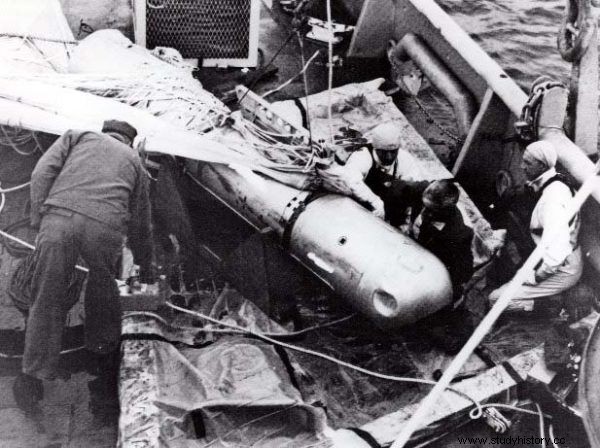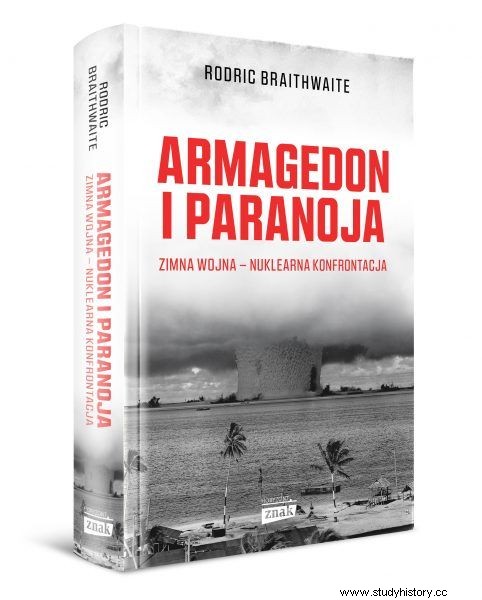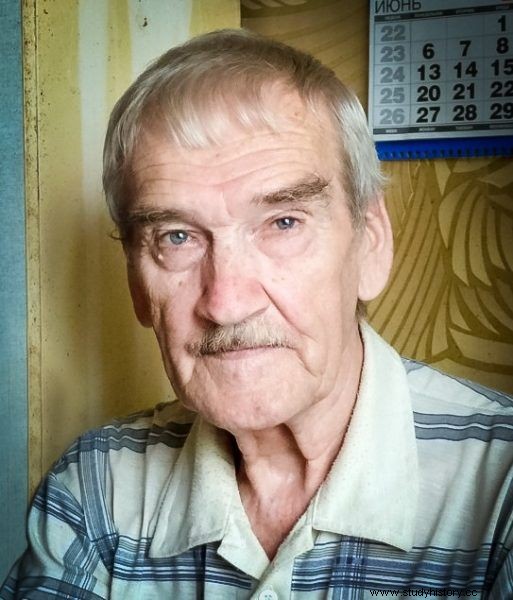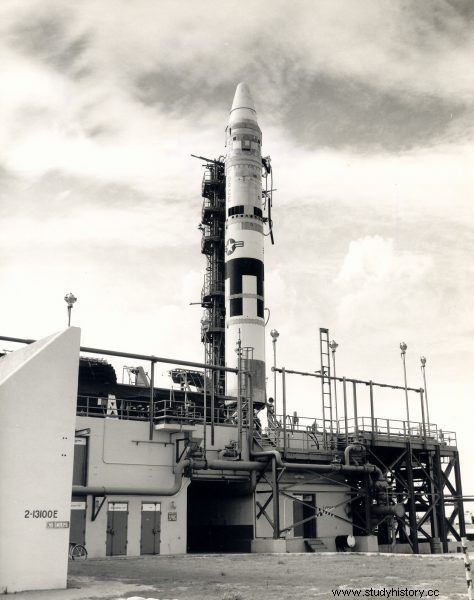Since the end of World War II, mankind has avoided a nuclear catastrophe at least a dozen times. Alerts have been raised multiple times due to malfunctioning security systems, computer errors, and ordinary human mistakes. How close was it that a nuclear war actually broke out?
The human factor - wrong assessment, wrong understanding of the facts, hasty risk taking - is not the only leverage of the crisis. There is a long list of smaller "almost crises", false positives and technical accidents related to nuclear weapons and command and control systems.
Some were prevented thanks to the security systems built into them, others were avoided thanks to human intervention, others by luck. None of them caused a nuclear explosion.
False accusations
In November 1979, it appeared that US military computers were showing a massive Soviet nuclear attack against the US command system going on and nuclear forces. Minuteman missile command centers were put on alert, interceptors took off, and the "Presidential Judgment Day plane" - a flying command post from which a nuclear war could be directed if necessary - took off, although without a president on board.

In the history of nuclear weapons, there have been many accidents which, if not for a stroke of luck, could have ended tragically.
After six minutes, the alarm was canceled when the early warning satellites and radars did not detect any signs of the attack. This happened because the tape simulating an attack was accidentally inserted into the Strategic Computer System operating at the Air Force Command. As reported to Congress, the aviation took countermeasures to "ensure that [a similar incident] would never happen again" (...).
The Russians noted this error. Leonid Brezhnev sent a secret letter to President Carter, in which he wrote that this mistaken alert was "a great danger [...]. I think you will agree with me that there should be no mistakes in this area. " Carter replied that Brezhnev's accusations were "inaccurate and inadmissible".
(...) Another false alarm happened a year later. On June 3, 1980, military computers again indicated a major missile attack. The bomber crews started their engines. The Minutemen bases have been put on alert. Once again the alarm was canceled when the radars did not detect any signs of the attack.
After three days, the situation repeated itself. This time the warning reached almost the very top. National security adviser Zbigniew Brzezinski was awakened at three in the morning by his military assistant William Odom, informing that about two hundred and fifty Soviet rockets had been fired against the United States.
The president had no more than ten minutes to order his retaliation, but Brzezinski demanded confirmation before he disturbed him. Odom called again and declared the previous message to be wrong:not two hundred and fifty rockets on the way, only two thousand two hundred . Brzezinski was about to call the president when Odom called again - another warning system did not confirm the Soviet attack.

The text originally appeared in Rodrick Braithwaite's book, "Armageddon and Paranoia. Cold War - Nuclear Confrontation ", which was published by the Znak Horyzont publishing house.
Brzeziński did not even wake his wife, judging that they would all perish within half an hour anyway. Analysis shows that a computer chip has failed. The colonel who ordered the alarm was removed from his post. Subsequently, his function was assigned only to the generals on the basis that the colonels can be wrong, but this never happens to the generals. Thirty years later, the US Air Force continued to use the same computers.Lost nuclear warheads
(…) There was no reason to believe that such regrettable incidents did not happen on the Soviet side either. Information on several such incidents has become public.
For example, a disturbing incident occurred during a series of NATO maneuvers that began in the fall of 1983. On September 26, Colonel Stanisław Petrov was on duty in the command center of the new and still malfunctioning early warning system called "Oko". At one point, the system generated a puzzling signal that said five American missiles were on their way to their destination.
Petrov rightly concluded that this was a false alarm, and decided not to inform his superiors. People in the West later speculated that if his report were passed on, he could trigger an atomic attack . (...) Petrov himself downplayed the significance of this incident, but after his retirement, he was showered with awards in the West, and in 2015 a Hollywood film about him was made entitled The Man Who Saved the World .

Stanisław Pietrow on September 26, 1983 probably prevented the outbreak of a global nuclear conflict.
Regardless of the false alarms generated on both sides by warning systems, the weapon itself has also experienced technical failures many times over the years. The US Department of Defense has assigned special word codes to such accidents (...).
The accidents described as Pinnacle-Nucflash (Peak-Atomic Flash) were related to an explosion or the possibility of a nuclear weapon exploding, accidentally or unauthorized rocket launch, or the shipment of an aircraft to another country with nuclear weapons. Other events - such as the unauthorized firing or throwing of a weapon, causing a fire, explosion, release of nuclear energy, or a nuclear blast without the risk of war - were called Broken Arrow.
In 2013, the US Department of Defense reported that there have been thirty-two accidents with this code since 1950 . Their actual number could be almost twice as large. Throughout the Cold War, the Americans lost eleven nuclear bombs that were never found.
Accidents and breakdowns
Between 1950 and 1980, there were approximately twenty-five accidents involving American aircraft and nuclear weapons. Planes crashed, exploded or disappeared. One flew into the cloud and was never seen again. In January 1961, the B-52 crashed over North Carolina - it was close to detonating two of its bombs.
(...) Rockets were equally prone to accidents. They caught fire and exploded in their silos. Weapons fell off the carts while loading or lost in storage. Sensitive ignition devices either broke or shorted with potentially catastrophic consequences.

The American Titan II rockets proved to be extremely emergency.
By the late 1970s, the US arsenal contained fifty-four liquid-fuel-powered Titan II rockets. In August 1965, the Arkansas missile base was reinforced to withstand an atomic impact. The warhead was removed from the rocket, but its tanks were full. A fire broke out and the building was filled with smoke - fifty-three construction workers suffocated in it. The rocket itself was not damaged (...).
In September 1980, an airman in Arkansas dropped a tool while working on a Titan II rocket. The tool perforated the fuel tank in the rocket. The fuel spilled out and the rocket exploded the next morning. Its head landed on the ground less than a hundred yards away. The security mechanisms worked. There was no explosion or loss of radioactive material, but a human was killed and the rocket station was destroyed. (...) The Ministry of Defense finally admitted to Congress that the rocket was out of order and could have had an accident. Nevertheless, sixty-three Titan II rockets remained in service until 1981 (…).
There have also been several accidents involving US nuclear submarines during these years. Most of them were rather small, although a few released radioactive substances. (…) However, little is known about Soviet nuclear disasters. Russian scholars argued that their security system was much better than that of the US. They emphasized that the weapon was designed to withstand fire and external explosions.
Haste is a bad advisor
In part, these claims turned out to be true, but they were certainly far from the truth. Under Mikhail Gorbachev, more and more data on Soviet nuclear accidents began to be disclosed. (...) Soviet weapon designers admitted that initially their safety standards were low , partly because they had to work very fast to catch up with the Americans.
(...) The tragic consequence of Russia's hasty submarine development program was their failure rate. Ten cases involved reactors or other nuclear components. Twelve mentioned fires or equipment failures. Six submarines were damaged or destroyed as a result of collisions with US ships or other collisions. One submarine lost a nuclear weapon that was found after extensive search.

The text originally appeared in Rodrick Braithwaite's book, "Armageddon and Paranoia. Cold War - Nuclear Confrontation ", which was published by the Znak Horyzont publishing house.
(...) In July 1961, the submarine K-19 / KS-19 of project 658 (according to the NATO classification:Hotel I) had a leak in the reactor cooling system during its maiden voyage. After attempting to repair it, eight seafarers died immediately from irradiation, and a further fifteen died within the next two years (...).In April 1977, the K-171 submarine near Vladivostok accidentally launched a nuclear warhead. The head was recovered after a search involving several dozen ships and an aircraft. In August 1985, ten sailors were killed by a reactor explosion on the K-431 submarine of Project 659 and Project 675 (NATO classification:Echo I and Echo II).
(…) In 2000, the K-141 Kursk submarine of project 949A (series:Antiej, NATO code:Oscar II) sank in the Barents Sea. It was not a nuclear accident, it was caused by the explosion of a defective torpedo. The entire 188 crew died - most of them immediately, others lived for a few more hours. Unlike the K-19 disaster, this incident received extensive media coverage.
Source:
The above text is excerpted from Rodric Braithwaite's book, "Armageddon and Paranoia. Cold War - nuclear confrontation ”, published by the Znak Horyzont publishing house.
The title, lead, illustrations with captions, bolds and subtitles come from the editorial office. The text has undergone some basic editing to introduce more frequent paragraph breaks.
